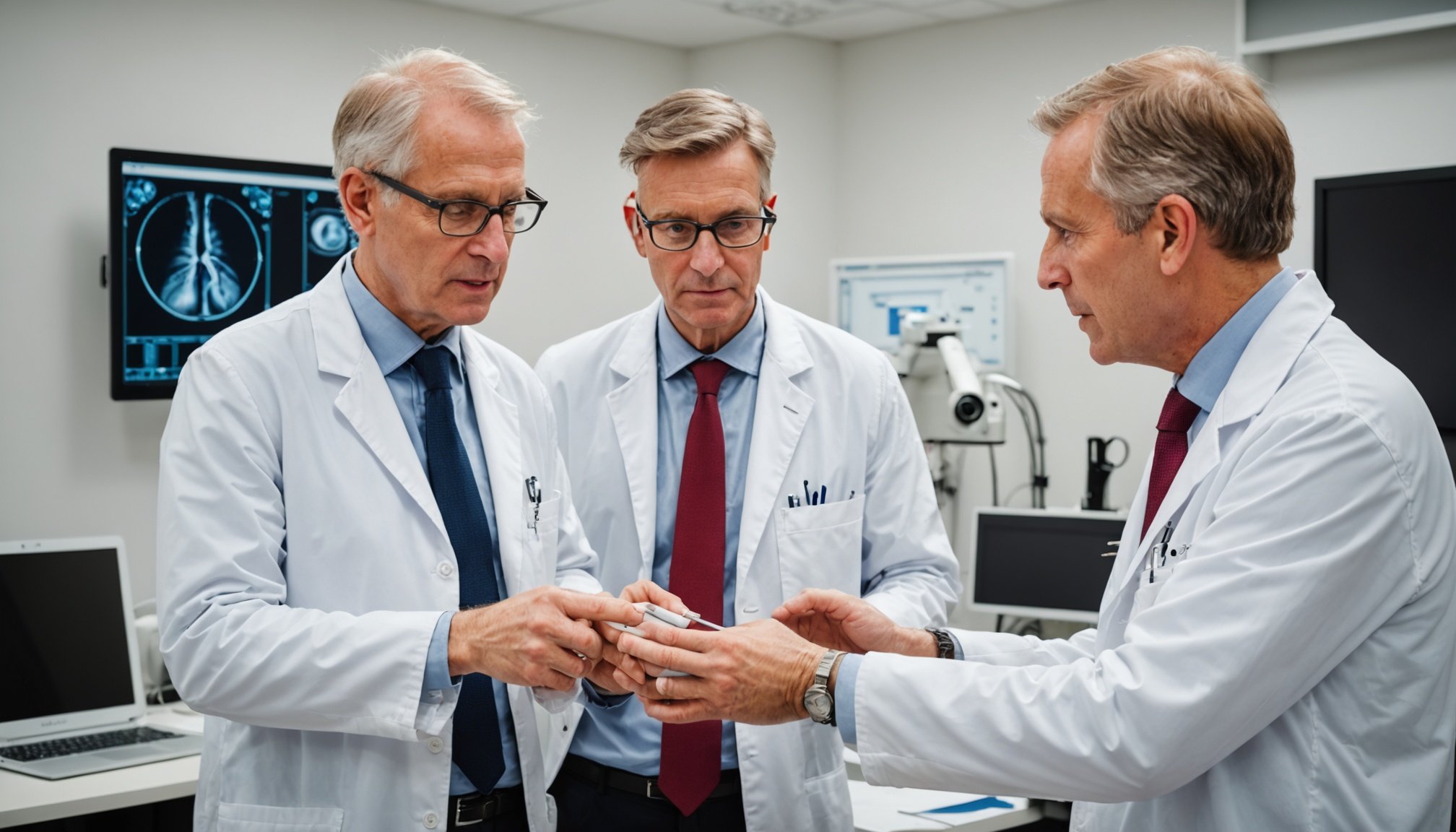Overview of Aortic Dissection Management
An aortic dissection is a serious condition involving a tear in the aorta’s inner layer, often resulting in the separation of the artery wall’s layers. It is classified based on the location of the tear and its progression. Early detection of this condition is crucial, as timely intervention can significantly improve outcomes and reduce the risk of complications.
Importance of Early Detection and Diagnosis
Recognising symptoms promptly is vital for a favourable prognosis. Unfortunately, symptoms can mimic those of other cardiac conditions, making diagnosis challenging. Techniques such as CT scans and MRIs play a pivotal role in distinguishing an aortic dissection from other heart-related issues.
Also read : Ultimate guide for uk dietitians: designing kidney-friendly meal plans for renal disease management
Treatment Options
When it comes to conventional treatment for aortic dissection, surgical intervention is often necessary. However, in certain cases where surgery may not be possible, non-surgical management comes into play. This includes medication strategies, such as blood pressure control, to mitigate stress on the aorta. Cardiologists in the UK are increasingly considering non-surgical methods for managing this condition, highlighting the importance of personalised care.
Overall, understanding the nuances of aortic dissection and the significance of early and accurate detection aids in effective management and improved patient outcomes.
Also to read : Unlocking solutions: how uk pediatric endocrinologists are tackling childhood obesity
Diagnostic Tools and Monitoring Techniques
Diagnostic tools are crucial for accurately identifying and managing an aortic dissection. Imaging techniques, such as echocardiography and CT scanning, offer detailed assessment opportunities. These methods help in establishing the precise location and extent of the dissection, enabling personalised care.
Incorporating a range of monitoring techniques is essential for ongoing management. Regular monitoring, through follow-up scans, ensures that any changes in the condition are quickly identified. This vigilance is vital for maintaining patient safety and optimising outcomes over the long term.
Biomarkers, although still obtaining widespread adoption, show promise in aortic dissection monitoring. They offer potential insight into disease progression, potentially complementing imaging technology. As healthcare practices evolve, the integration of biomarkers could revolutionise how aortic dissections are tracked and managed.
Utilisation of these diverse tools ensures comprehensive, precise insights into the patient’s condition, thereby facilitating effective management strategies. This emphasis on a multi-faceted diagnostic approach reflects the complexity of aortic dissection. Advances in technology promise further refinement in individualised care, bolstering long-term patient health.
Evidence-Based Best Practices in Non-Surgical Management
Non-surgical management of aortic dissection is increasingly emphasized in clinical guidelines, leveraging evidence-based practices to optimise patient care.
Medication Management
Pharmacological interventions are central to non-surgical treatment. Beta-blockers play a pivotal role in reducing heart rate and myocardial contractility, thereby lowering stress on the aortic wall. Vasodilators are also used to manage blood pressure, further stabilising the condition. Clinicians must routinely monitor and adjust these medications to ensure they align with individual clinical guidelines for optimal control.
Blood Pressure Control
Maintaining strict blood pressure control is paramount for the efficacy of non-surgical strategies. Recommended targets are often patient-specific, emphasizing the need for personalised management plans. Physicians rely on a blend of medication management and lifestyle modifications to achieve these goals.
Pain Management
Pain management remains a critical component of non-surgical approaches. By addressing symptoms effectively, healthcare providers improve patient comfort while supporting physiological stability. This involves a careful balance of pharmacologic agents tailored to the individual’s needs.
Adhering to these evidence-based practices helps enhance aortic dissection treatment, offering a robust alternative to surgical interventions for select cases.
Multidisciplinary Approach to Care
In managing aortic dissection, a multidisciplinary care approach is essential. Engaging various specialists ensures comprehensive treatment and optimises patient outcomes.
Collaboration with Surgeons
Working closely with surgeons is crucial, particularly when assessing the need for surgical intervention. Combining expertise from both surgical and medical perspectives aids in decision-making, determining whether surgical or non-surgical management is appropriate.
Role of Primary Care Physicians
Primary care physicians are vital in the early detection and ongoing monitoring of aortic dissection. They ensure continuity of care by coordinating with specialists and managing routine follow-ups. This collaboration can lead to early interventions and tailored treatment pathways, benefiting patient prognosis.
Involvement of Interventional Radiologists
Interventional radiologists play a key role, especially when imaging techniques are required for diagnosis and monitoring. Their expertise enables accurate assessment of the aorta’s state, guiding personalised treatment plans. Utilizing their skills not only improves diagnostic precision but supports timely, minimally invasive procedures.
This team-based strategy, involving diverse specialists, harmonises efforts across disciplines. It exemplifies how multidisciplinary care successes in practice, as illustrated by case studies, highlight better health management strategies and improved life quality for patients in the UK.
Recent Research Findings and Future Directions
In recent years, significant advancements in aortic dissection research have been made, focusing on non-surgical innovations and novel monitoring strategies. Groundbreaking studies are exploring less invasive approaches, revealing promising results when surgery is not an option. These advancements are pivotally transforming traditional management practices, paving new paths for patient care within the United Kingdom.
Innovations in monitoring technologies, such as enhanced imaging techniques and wearable devices, offer real-time insights into condition progression, facilitating timely interventions. Additionally, these innovations improve efficiency in patient management, potentially reducing healthcare burdens by minimising the need for repeated hospital visits. Furthermore, the integration of artificial intelligence in diagnostic tools is helping accuracies in predicting risk factors and tailor therapies.
Looking forward, the future trends indicate a sustained emphasis on personalised medicine, which will likely integrate with big data analytics. This will increase treatment precision and reduce complications. The potential for policy shifts towards more non-surgical methodologies in UK practices signals a transformation in managing aortic dissections. Researchers anticipate that an enhanced understanding of genetic factors might unlock curative opportunities, providing exploratory avenues in aortic dissection treatment.
UK-Specific Guidelines and Protocols
In the United Kingdom, clinical protocols for managing aortic dissection are rigorous, emphasising patient safety and optimal outcomes. The NHS recommendations focus on a structured approach, incorporating both surgical and non-surgical management techniques to cater to diverse patient needs.
NHS Recommendations
The NHS stresses the importance of adhering to national standards in aortic dissection management. This includes early diagnosis through recommended imaging techniques, such as CT scans and echocardiography, serving as foundational diagnostic tools. Strict adherence to these guidelines ensures uniformity in patient treatment across the UK, enhancing care quality.
National Standards
The national standards emphasise personalised, patient-centric approaches. Physicians are encouraged to develop management strategies tailored to individual risk profiles, guided by comprehensive clinical data. Such strategies may include pharmacological interventions, lifestyle adjustments, and regular monitoring.
Local Practice Impact
Local practices adapt UK guidelines to improve patient management outcomes. Active collaboration among healthcare providers is encouraged to refine treatment protocols, ensuring they meet regional healthcare demands and resource availability. This local adaptation is crucial in aligning national objectives with practical clinical application, fostering innovation in aortic dissection care within the UK.

